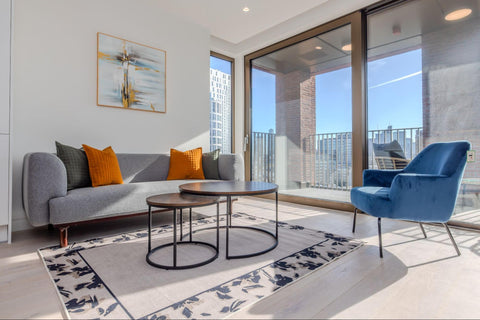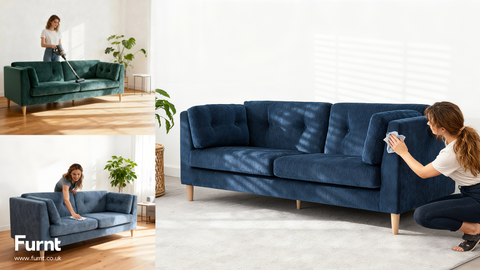When you step into a beautifully designed room, the first thing that often stands out is not the paint or the lighting – it is the furniture. Furniture forms the backbone of interior design, giving a room purpose, setting the mood and tying the space together.
The right pieces do far more than simply occupy a room; they transform it into a space that feels intentional, stylish and complete.
So, what is the true impact of furniture on interior design, and how do you go about choosing the right pieces for your home? Let’s take a closer look.
Why Furniture Matters in Interior Design
1. Defining Purpose
Furniture determines how a space is used. A dining table makes a room about connection and shared meals, while a sofa signals comfort and relaxation. Without furniture, rooms can feel incomplete and undefined.
2. Creating Atmosphere
Every piece of furniture influences the mood of a room. Sleek, minimal designs create a modern, open feel, while plush, classic pieces add warmth and tradition. The furniture you choose reflects not only your personal style but also the way you want people to feel in the space.
3. Enhancing Comfort
A room should not only look good but also feel good. Comfortable, well-designed furniture improves daily life—whether it’s a supportive office chair, a cozy sofa, or a perfectly sized dining table where friends and family gather.
4. Balancing Aesthetics and Function
Great interior design balances beauty with practicality. The furniture you select should achieve both – pieces that look stunning while also serving your lifestyle with ease.

How We Select Furniture Design
Choosing furniture is not about picking random items that catch your eye – it is a thoughtful process that balances function, comfort and style. Here is how to approach it:
-
Understand the purpose of the space. Define what the room is for before you begin. Is it a place for work, rest, entertaining or storage? Knowing the purpose will guide every decision.
-
Prioritize comfort and quality. A chair may look stunning, but if it is uncomfortable it will not serve its role. Focus on durability, ergonomics and high-quality materials to ensure lasting value.
-
Match the style. Furniture should complement the overall theme of your home, whether modern, classic or eclectic. A cohesive look makes a space feel intentional and well thought out.
-
Think about layout and flow. It is not only about what you buy, but where you place it. Thoughtful furniture placement supports natural movement and encourages interaction within the space.
-
Choose for longevity. Trends may change, but timeless, well-crafted pieces remain relevant. Opt for designs that will stand the test of time, and whenever possible, consider sustainable options for a more mindful home.

Final Thoughts
Furniture has a profound impact on interior design. It shapes how we live, how we feel and how we connect with others in our spaces. By choosing carefully, you are not just decorating; you are creating a home that reflects your lifestyle and personality.
The right furniture design blends comfort, functionality and beauty. When selected with intention, it does more than simply fill a room – it brings it to life.
FAQ: Furniture and Interior Design
1. Why is furniture important in interior design?
Because it defines the function of a space, sets the mood, and ties the design together.
2. How do I choose the right furniture for my home?
Start by defining the room’s purpose, then prioritize comfort, style, and flow.
3. Should furniture match the rest of the décor?
Yes—furniture should complement your interior design theme, whether that’s modern, traditional, or eclectic.
4. What’s more important: style or function?
Both matter. Ideally, furniture should balance aesthetics with practical use.
5. How can I make sure my furniture lasts?
Choose quality materials, invest in timeless designs, and take care of your pieces with proper maintenance.





Comments (0)
There are no comments for this article. Be the first one to leave a message!